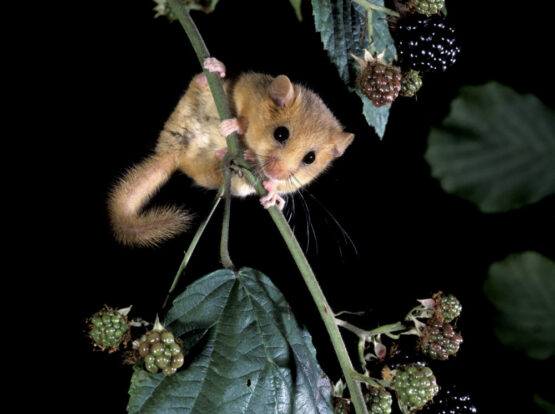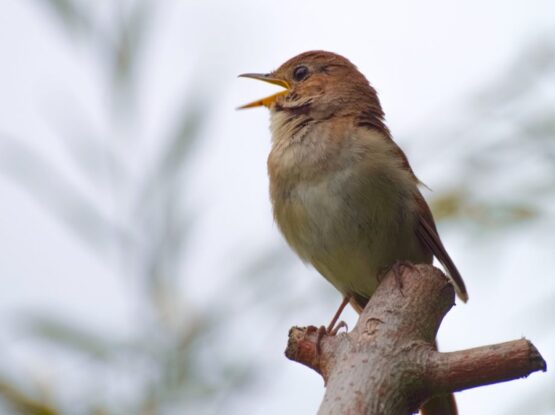Flagship Species: The Hazel Dormouse

After a very difficult decision, the Hazel Dormouse (Muscardinus avellanarius) was selected to be the flagship species to represent the Dedham Vale National Landscape.
14 organisations with an interest in the National Landscape’s wildlife pitched for 9 different species and then took part in a passionate debate before voting to decide the outcome.
The arguments for the Hazel Dormouse were too strong in the end which was reflected in the final vote.
The Hazel Dormouse was selected as the flagship species for a variety of reasons. Within the Dedham Vale National Landscape there are currently several main scattered populations of the Hazel Dormouse.
They are found where there are healthy networks of hedgerows and well connected vigorous patches of scrub.
The dormouse has declined significantly in the last 100 years, so much so they are now defined on the IUCN red list as a species that is vulnerable to extinction in Britain.
There is recent evidence from the National Dormouse Monitoring Programme that the decline is accelerating and an analysis of the dataset published in 2017 indicates that the Hazel Dormouse has suffered a 72% population crash since 1993 and the decline is still ongoing. They are the canary in the coalmine that represents our countryside today.

It would be extremely concerning to lose the dormouse because they act as an umbrella species. Where dormice thrive so do a host of other species inhabiting similar habitats.
For example, the Nightingale (Luscinia megarthynchos) also need scrub and coppiced woodland habitats. Farmland birds such as Yellowhammers breed in the dense hedges and invertebrates such as the White Admiral (Limenitis Camilla) butterfly benefit from the honeysuckle that grows in the Dormouse’s favourite habitats.
It is not too late to help the Hazel Dormouse and there are several actions that can be taken to turnaround their fortunes. Things like promoting sensitive woodland management will help to reinstate an uneven aged structure to the woodland shrub layer.
Allowing scrubby corners to develop increases the habitat availability and new species rich hedgerows planted in targeted locations will help to reconnect the landscape.
Why is the Hazel Dormouse Declining?
The reasons for their decline is both varied and complex. Unlike other small mammals dormice naturally live at very small densities, often only 2 adults per hectare. Because of this, many small woodlands are now isolated and are simply not large enough on their own to sustain viable populations.
Abandonment of traditional coppice management techniques which rejuvenates the scrubland is another factor. A reduction in livestock farming where hedgerows are no longer needed to be stock proof and over time hedges that are still remaining have become gappy. Once stettled, dormice don’t like moving more than about 100 metres from their nest and they avoid coming down to the ground and open areas.
Therefore the loss of a hedgerow can have a significant impact on their populations. They are slow breeders and declines can be slow at first but once the tipping point is reached, local extinctions are inevitable
Fascinating Facts
- It’s a tiny mammal that can easily fit into the palm of your hand.
- The Hazel Dormouse used to be so abundant in Victorian times that children would collect them from hedgerows and keep them as pets. Due to their ability to curl up when hibernating there are stories of children rolling them across tables as furry marbles!
